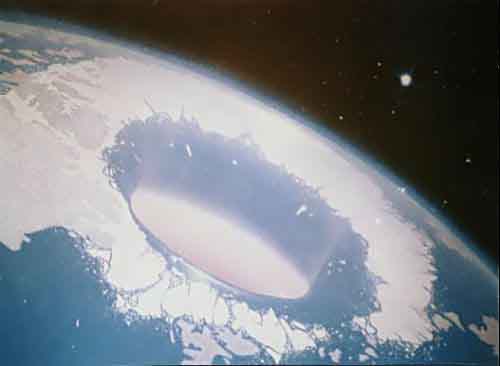The Hollow Earth theory is an age-old concept that has intrigued explorers, writers, and conspiracy theorists for centuries. Beneath the outer crust of our planet, some propose, lies a vast and unexplored interior, a hollow world filled with mysteries, hidden civilizations, and untold wonders. We embark on a journey into the depths of the Hollow Earth theory, exploring its origins, key beliefs, and why it continues to captivate the human imagination. Here we will be unraveling hollow earth theory and the Antarctica connection.
The Origins of the Hollow Earth Theory
The roots of the Hollow Earth theory can be traced back to ancient civilizations and mythologies. In Greek mythology, the idea of “Agartha” or a subterranean realm was postulated. However, it was not until the 17th and 18th centuries that the concept gained traction among early proponents. One such visionary was John Cleves Symmes Jr., who suggested that the Earth had massive openings at its poles leading to a hollow interior.
The Hollow Earth Connection to Antarctica
Antarctica, the southernmost continent, holds a special place in the Hollow Earth theory. Its remote and frozen expanse has long sparked fascination and imagination. Some proponents of the theory believe that Antarctica’s icy surface conceals openings leading to the inner Earth, inviting curious explorers to uncover its hidden secrets.
Among the intriguing claims is the existence of a warmer, ice-free paradise within the hollow Earth, where lush vegetation and exotic creatures thrive. According to certain accounts, ancient civilizations might have sought refuge in this hidden realm, preserving knowledge and culture far from the challenges of the outer world.
Exploring the Evidence
While scientific skepticism surrounds the Hollow Earth theory, proponents often cite anecdotal evidence and mysterious historical accounts to support their claims. Tales of explorers who allegedly ventured into hidden openings at the poles, only to disappear and never be heard from again, add to the allure of this enigmatic theory.
Antarctica, with its vast unexplored regions, offers a fertile ground for such speculation. Satellite imagery and alleged anomalies continue to fuel the imagination of believers, suggesting the possibility of concealed entrances to a subterranean world.
A Place for Imagination and Speculation
The Hollow Earth theory, while not widely accepted within the scientific community, continues to captivate the human spirit of exploration and wonder. It serves as a reminder of humanity’s innate curiosity about the unknown and the possibility of hidden realms waiting to be discovered.
Beyond the realms of science, the Hollow Earth theory has inspired literature, art, and popular culture. Writers like Jules Verne, with his novel “Journey to the Center of the Earth,” and H.P. Lovecraft, in his fictional works, have woven captivating tales around the concept of a hollow world filled with untold wonders.
The Hollow Earth theory remains an enduring enigma, inviting speculation and fueling the human thirst for exploration and adventure. Antarctica, with its stark beauty and remoteness, provides an alluring backdrop for these age-old mysteries. While science continues to provide evidence contrary to the Hollow Earth concept, it serves as a testament to the boundless capacity of the human mind to imagine and seek the unknown.
Ultimately, whether the Hollow Earth theory will ever be definitively proven or debunked remains uncertain. Many believe in the importance of unraveling hollow earth theory and the Antarctica connection. Until any facts and discoveries arise, it will continue to exist as a fascinating piece of folklore and speculative fiction, adding to the tapestry of human imagination and our eternal quest for understanding the mysteries that lie both within and beyond our reach. If you like stories about Antarctica, try the thriller Arctic Ave by Daniel River.







